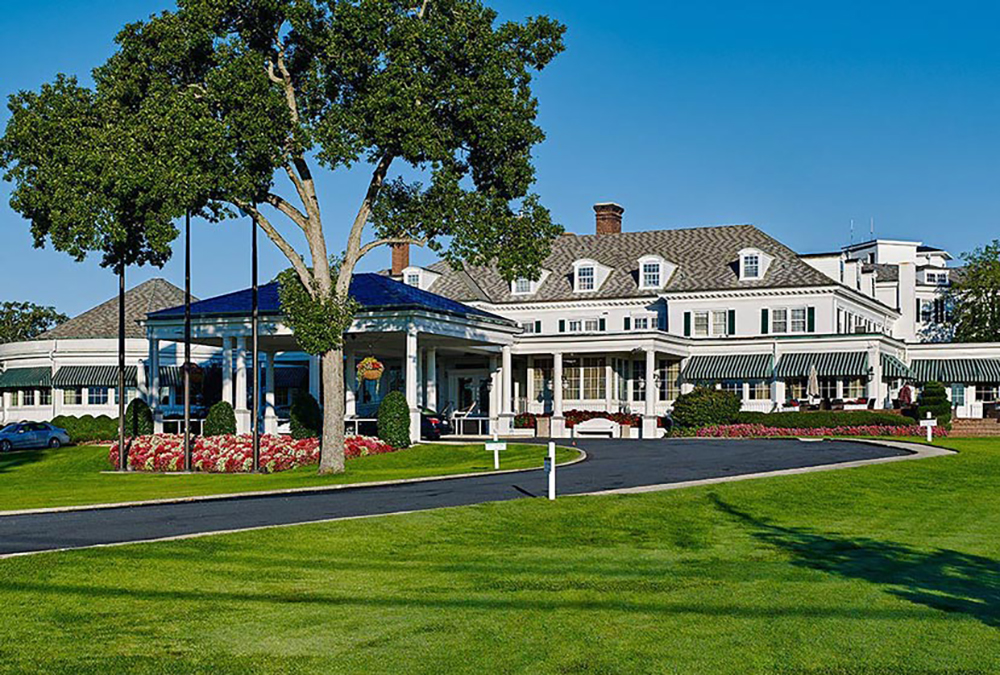By William Kelly
Sitting in the shade of an apple tree near the first tee at the Atlantic City Country Club in the summer of 1914, Clarence Geist exhaled from his cigar and complained about having to wait to play a round of golf.
Geist, or “CH” as he was known, was a multimillionaire, industrialist and owner of more than 100 utilities, including gas companies in Baltimore, Philadelphia and Atlantic City. In 1910 he founded the company that would eventually become South Jersey Industries.
He was also an avid golfer, playing as much as he could, often running his companies from the golf course.
Then one day his golfing partner, Maurice Risley, told him if he had as much money as Geist did, he would build his own golf course.

Geist thought it was a great idea and instructed Risley, a real estate agent, to find him a bay front parcel of land suitable for a links course that would allow for the variable winds to come into play, much like the legendary Scottish links courses. In the end the winds of change, fanned by Clarence Geist, would alter the landscape of America and forever change the nature, style and business of the game of golf.
Risley’s family were among the first settlers of the area, a family that included baymen, land owners, powerful politicians and colorful personages. Maurice Risley was one of the more interesting, if only for enticing Geist to build his own golf course.
While Risley selected and surveyed the bayside land on Route 9, just off the White Horse Pike in Galloway, Geist hired Hugh Wilson to lay out his golf course. Wilson, who also laid out the Merion Golf Club course in Philadelphia, was an amateur golfer who traveled to the British Isles to study the links courses. He later helped finish George Crump’s legendary Pine Valley Golf Club, which included Geist as an original member. So while Wilson assisted in the design of just three courses – Merion, Seaview and Pine Valley – they are considered three of the best golf courses in the world.
While Wilson began to lay out the course, which was later completed by the equally renowned Donald Ross, their distinctive signatures can still be clearly seen along the fairways and among the traps and bunkers.
In 1927 Geist hired Howard C. Toomey and William S. Flynn to design the scenic Pines Course in the woods to the west behind the clubhouse at Seaview, which was expanded in 1957 by Flynn mentor William Gordon. More recently the courses were restored to their original designs to reflect the visions of Wilson, Ross, Toomey and Flynn, considered to be four of the greatest golf course architects in America.
To go with his distinctively designed links golf course, Geist hired the best golf professional available at the time – Englishman Wilfrid Reid, who had finished among the leaders of the 1913 US Open Championship and wanted to stay in America, the land of opportunity.
Geist, being a self-made millionaire at a time when there were far fewer of them than today, is said to have earned a personal income of $2 million a year. He lived first class, wore the best clothes, owned the best cars, lived in the biggest houses and exhibited a lavish lifestyle. So the clubhouse would also have to be the best, serve the best food and wines, provide the best service and everything would be done in a simple, but elegant style.

Clarence Geist
Geist christened his club the Seaview Country Club, even though the sea was quite out of view. Seaview was considered one of a dozen golf club offshoots of the Country Club of Atlantic City (Atlantic City Country Club) in Northfield. Some others were Pine Valley, Oakmont in Maryland, and most of the golf clubs in South Jersey and the Jersey Shore, which gave it the reputation of being the “mother club” when golf began to spread its wings across America.
While the Country Club of Atlantic City was owned by the Atlantic City Boardwalk hotel owners and open to all of their guests, Geist’s Seaview Country Club would be private, open only to Geist’s friends and business associates, and those who fit his personal qualifications. If you were invited, membership dues weren’t that expensive, but if Mr. Geist heard you complain about anything – the food, the wine, the service – he was known to walk up to your table and say, “You’re resignation has been accepted.”
Golf at Seaview made its debut with great fanfare in January 1915. Over the course of the next century, a lot of great, championship golf would be played there, but the ripples of change that began there would expand far beyond Seaview and alter the nature and style of the game and the landscape of America.
Geist would go on to even bigger and better things, opening the historic Boca Raton Country Club in Florida, where he hired Tommy Armour to be the club golf professional. He made many similar deals before his passing in 1938 at age 72, but Seaview would continue on as a living, growing entity and see many great championships, social events and interesting characters.
Wilfrid Reid, Geist’s first golf pro, didn’t last long. From Nottingham, England, home of Robin Hood, Reid was a good tournament player and stayed at the top of the leaderboard with the best. But at a pre-1913 US Open tournament at Shawnee in East Stroudsburg, Pa., he got into a fist fight with British champion Ted Ray.
The argument began in the Shawnee locker room where Johnny McDermott, the 20-year-old Atlantic City pro and two-time US Open defending champion, had already created considerable controversy after winning the tournament by eight strokes and promising the foreign visitors they wouldn’t take the US Open trophy home with them. McDermott’s remarks put golf on the front pages of most newspapers worldwide and created great international interest in the 1913 US Open.
Meanwhile Wilfrid Reid, who was second after the first round at Shawnee, had words about politics with Ted Ray. Reid later said he asked Ray how he could be a socialist while making so much money playing golf. That was enough to spark Ray to take a swing at Reid, and, like McDermott, the gentleman had to publicly apologize.
While Brits Harry Vardon and Ted Ray would tour the United States a number of times, Wilfrid Reid’s 1913 visit was his first. He liked America and took up Geist’s offer to be Seaview Country Club’s first golf professional, which was also making news because of its refined extravagance.
For some reason Geist wasn’t happy with Wilfrid Reid, and while discussing this matter over drinks with some other rich power brokers and golf club owners, they decided to switch golf pros. So Wilfrid Reid and his contract were traded like a sports star to the Wilmington Golf Club in Delaware, while the golf pro there went to Garden City in New York, and the pro there, James “Jolly Jim” Fraser, would become the second golf pro at Seaview.
Fraser was probably the cornerstone to that “triple-switch,” as the sports writers of the day called it, since he was from Scotland where the Fraser name is proudly carved onto rocks at the Highland battlefields depicted in the movie “Braveheart.”
That’s not the only place where the Frasers have left their mark. Turns out that Fraser’s arrival would forever change golf in South Jersey.
Next Week: Jim Fraser’s enduring legacy.














